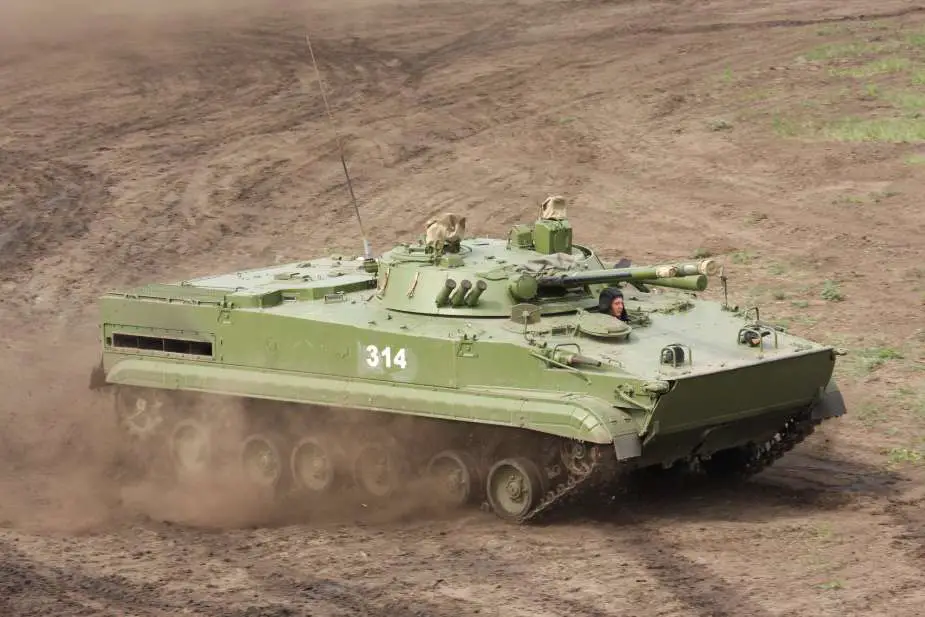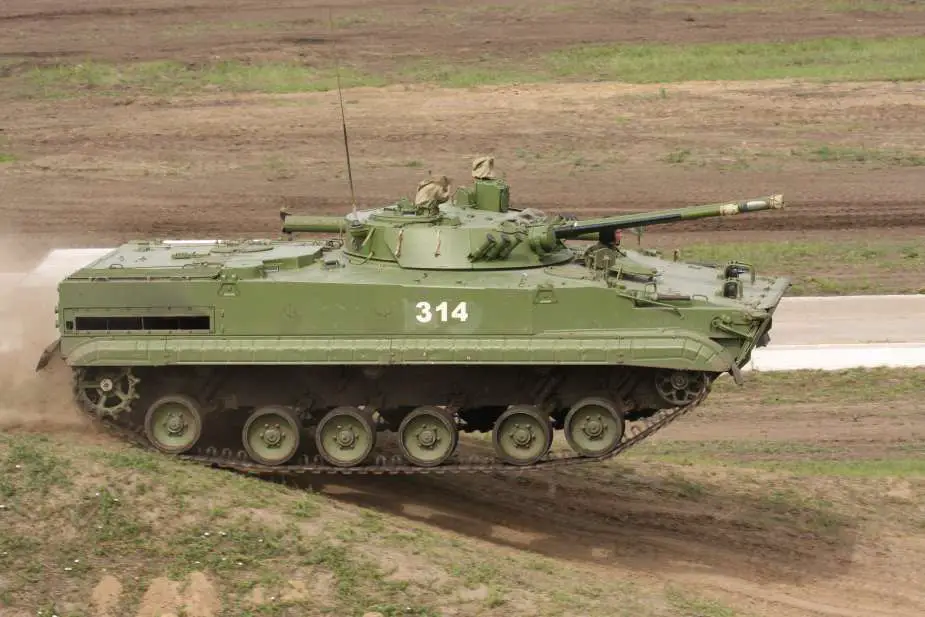As reported by InfoDrive on December 31, 2023, Sergey Chemezov, the General Director of the Russian state corporation Rostec, has announced plans to test the remote-controlled BMP-3 Sinitsa infantry fighting vehicle (IFV) within the Russian military operation zone in Ukraine.
Follow Army Recognition on Google News at this link

BMP-3 Infantry Fighting Vehicle (IFV) during a demonstration in 2009. (Picture source: Army Recognition)
The BMP-3 Sinitsa is currently in the testing phase, and upon successful completion of this stage, it is expected to be deployed to the frontlines, according to Chemezov. What sets this remote-controlled IFV apart is its Sinitsa remote control kit, allowing it to operate without a human crew and relying solely on electronic tablet input.
This technological innovation was publicly demonstrated for the first time at the international military-technical forum Army-2022. The development of this advanced capability has been influenced by insights gathered from various sources, including the ongoing conflict in Ukraine and feedback from soldiers with firsthand experience.
Furthermore, Rostec envisions broader applications for this technology beyond the BMP-3, with Chemezov emphasizing the potential to reduce risks to crew members in hazardous military situations. Chemezov mentioned that the Sinitsa remote control kit may eventually be integrated into other military vehicles, potentially including the 2S25M light tank, expanding its utility and impact.
As reported by Army Recognition on July 19, 2023, the collaborative effort behind the BMP-3 robotic infantry fighting vehicle, featuring the Sinitsa module, involves Kurganmashzavod, a subsidiary of the High-Precision Systems holding, and the Signal All-Russian Research Institute. Through the incorporation of specialized equipment, the functions of the driver and gunner have been successfully automated, while still allowing for manual control when necessary, offering versatility in various operational scenarios, thanks to a new software named Prometheus.
According to a publication released by Rostec, the vehicle operates without a human crew, as both the driver and gunner functions are carried out by robotic systems. It can also be controlled remotely using a wearable remote control or a remote control point, making it adaptable for deployment in the most hazardous areas. Its capabilities include combat engagement in complex urban environments, leading battle formations, and providing fire support to motorized rifle units.
The "Sinitsa" combat module differs from the conventional turret of the BMP-3 infantry fighting vehicle with the presence of a panoramic sight equipped with a thermal imaging channel. This enhancement improves the vehicle's range in detecting and identifying enemies and engaging them with a wide array of weaponry.

In terms of armament, the BMP-3 infantry fighting vehicle is equipped with a 100 mm cannon capable of firing shells and anti-tank missiles, a 30 mm coaxial cannon, and three 7.62 mm machine guns. (Picture source: Army Recognition)
In terms of armament, the BMP-3 infantry fighting vehicle is equipped with a 100 mm cannon capable of firing shells and anti-tank missiles, a 30 mm 2A72 coaxial cannon, and three 7.62 mm machine guns. This armament equips the BMP-3 for combat situations, with the ability to engage targets up to 6,000 meters away using missiles and 4,000 meters with conventional ammunition.
The vehicle features the 2K23 system in its turret, which includes a ballistic computer, various sighting devices, and an infrared searchlight. Post-2005 models can incorporate advanced fire control systems with thermal imaging and laser rangefinders for increased accuracy.
With a rear engine layout, the BMP-3 can carry up to seven infantry personnel. It is equipped with a 500 hp engine, offering a range of 600 km and the capability to operate at altitudes of up to 3,000 meters. The vehicle's hull and turret are constructed from aluminum alloy with additional armor for enhanced protection. Additionally, the BMP-3 is equipped with smoke grenade launchers, a chemical agent detector, and an automatic fire extinguisher. Options for reactive armor and an electro-optical jammer are also available, further bolstering its capabilities and survivability on the battlefield.
As the development and testing of the remote-controlled BMP-3 Sinitsa infantry fighting vehicle continue, it remains to be seen how it might influence the Russian Armed Forces's strategic capabilities. The BMP-3's design, characterized by an aluminum hull and ammunition load, presents certain vulnerabilities in Ukraine, probably leading to a shift towards remote control to potentially lower combat casualties.
In the broader context of unmanned military technology in Russia, the BMP-3 Sinitsa is part of a larger trend. For instance, Uralvagonzavod (UVZ) is testing the Sturm unmanned Main Battle Tank (MBT), built on the T-72B3 chassis, with potential deployment in Ukraine in view. Furthermore, Rostec's industrial director Bekhan Ozdoev has recently announced the development of a robotic variant of the Tornado-S Multiple Launch Rocket System (MLRS).
In parallel with these projects, Russia is developing autonomous missile and drone technologies. This includes the deployment of enhanced S-400 Triumf missiles in Ukraine, featuring active homing heads for independent target identification and tracking. The operation of upgraded Lancet kamikaze drones, identified as "Izdeliye-53 or Z-53," which began in October 2023, and the recent unveiling of a new variant, the 'Izdeliye 55,' reportedly resistant to electronic warfare, on January 2, 2024, are part of these efforts. Additionally, there are reports of Russia's development of a 6x6 Multiple Launch Drone System (MLDS) for these latest Lancet drones, indicating a continued focus on enhancing autonomous military capabilities.















